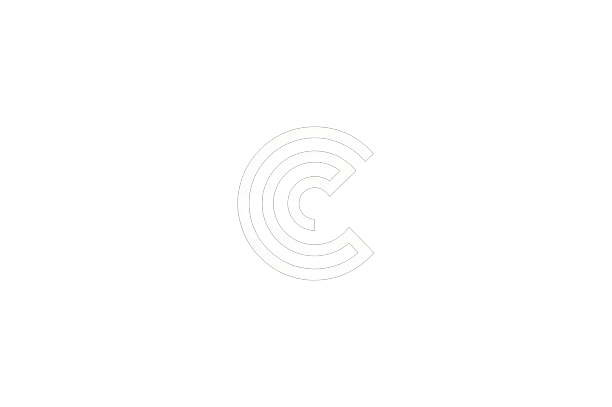Monday to Saturday - 8:00 -17:30

In the ever-evolving landscape of blockchain technology, Kadena emerges as a standout player, offering innovative solutions that redefine global interactions and transactions. Rooted in the belief that blockchain has the power to reshape traditional paradigms, Kadena has crafted a distinctive ecosystem from scratch.
At the core of this ecosystem lies KDA, its native digital currency, designed to facilitate transactions and operations within the platform. But beyond its foundational role, KDA’s value intrigues investors and enthusiasts alike.
Is KDA a promising investment? What lies ahead for its future? In this article, we delve into KDA’s potential trajectory, unraveling trends and fluctuations in its price to offer insights into its future.
Understanding Kadena:
Kadena represents a pioneering blockchain platform with a vision to revolutionize global interactions and transactions through innovative technology. Grounded in the belief that blockchain can disrupt traditional business processes, Kadena takes a unique approach by reimagining chain technology’s integration with the corporate world. This vision birthed a proprietary chain architecture and specialized tools aimed at making blockchain practical for enterprises. Notably, Kadena stands as the first and only Layer-1 blockchain addressing scalability while upholding the security and decentralization of Proof-of-Work (PoW).
At the heart of Kadena’s innovation lies its multi-chain structure, Chainweb, and a hybrid consensus mechanism melding DAG and PoW. This architecture empowers Kadena to significantly enhance throughput and security, catering to high-volume scenarios like global financial systems. Additionally, Kadena introduces Pact, a user-friendly smart contract language, streamlining the process of creating and deploying secure contracts. With a vision to cultivate a comprehensive ecosystem for builders, Kadena fosters innovation across diverse domains, spanning from DeFi and oracles to smart contracts and beyond.
Exploring KDA:
KDA serves as the native digital currency of the Kadena blockchain platform, facilitating transactions and serving as a reward mechanism within the network. Much akin to Ethereum’s ETH, KDA powers transactions and covers various operations on the Kadena blockchain. It operates dually as a miner’s reward for validating and appending new blocks to the network, as well as a transaction fee for users desiring inclusion of their transactions in blocks.
However, KDA’s significance extends beyond its utility within the Kadena ecosystem. It embodies ownership and participation in the platform, enabling users to engage in diverse activities such as deploying smart contracts, participating in governance decisions, and interacting with decentralized applications (dApps) within the Kadena ecosystem.
Use Cases of Kadena:
Kadena’s versatile blockchain platform lends itself to a myriad of use cases across industries, leveraging its unique architecture and features:
Enterprise Solutions: Kadena’s scalable infrastructure and secure smart contract language render it conducive for businesses to develop and deploy tailored applications.
Financial Services: With its scalability and transaction speed, Kadena powers global financial systems, accommodating high-frequency trading and settling numerous transactions with minimal delay.
DeFi (Decentralized Finance): Kadena’s cost-effective, high-throughput, and secure nature make it apt for DeFi applications, including decentralized exchanges and lending platforms.
Supply Chain Management: Kadena’s transaction handling capability makes it ideal for tracing and recording supply chain activities, ensuring transparency and authenticity.
Tokenization: Leveraging KDA and Kadena’s infrastructure, real-world assets can be tokenized, enabling fractional ownership and trading of traditionally illiquid assets.
Healthcare: Secure storage and sharing of patient data, efficient pharmaceutical supply chain management, and streamlined healthcare data exchange represent potential applications.
Gaming: High transaction throughput and low latency enhance in-game economies, enable provably fair gameplay, and streamline digital asset trading.
How KDA Stands Out:
KDA distinguishes itself from its peers through a unique amalgamation of technologies and design principles:
Scalability and Security: KDA’s multi-chain architecture, blending DAG and PoW, facilitates high throughput while ensuring robust security, setting it apart from conventional PoW chains.
Pact Smart Contracts: Introducing Pact, a human-readable smart contract language, KDA prioritizes safer and more accessible contract development, automating bug detection and ensuring security.
Industrial Scalability: With the capacity to handle millions of transactions per second, KDA is primed for global financial systems and real-world enterprise applications, distinguishing it from many blockchain platforms.
Energy Efficiency: In contrast to some PoW chains, KDA maintains energy efficiency even at scale, offering a more sustainable blockchain technology approach.
Crypto Gas Stations: KDA’s introduction of crypto gas stations for businesses eliminates transaction fees for customers, fostering mass adoption of dApps.
KDA’s Operational Mechanism:
KDA operates on a distinctive hybrid consensus mechanism, melding a directed acyclic graph (DAG) with proof-of-work (PoW). This innovative approach, termed Chainweb, involves intertwining multiple chains, significantly boosting throughput while preserving security.
In the Chainweb framework, each chain functions as an independent blockchain, confirming blocks across three peer chains simultaneously. This parallelization empowers KDA to achieve high throughput and transaction speeds, catering to global financial systems and high-frequency
applications. Security is fortified by necessitating attackers to target multiple chains simultaneously.
KDA’s native token, KDA, fuels transactions and rewards miners validating transactions and creating new blocks. This dual-purpose token ensures seamless ecosystem operations while incentivizing network security and participation.
KDA’s Tokenomics and Distribution:
KDA’s tokenomics framework profoundly influences the platform’s dynamics, reflecting a meticulous distribution and allocation strategy:
Token Supply and Allocation:
KDA boasts a fixed total supply of 1 billion tokens, maintaining scarcity for long-term viability. Token allocation serves distinct purposes within the Kadena ecosystem:
Mining: A significant share of KDA, totaling 700 million tokens, incentivizes transaction validation and block addition, spanning over 100+ years to bolster network security and participation.
Platform Share: Approximately 200 million tokens fuel platform growth over nine years, stimulating ecosystem expansion and fostering innovation.
Investors, Strategic Reserve, and Contributors: A strategic reserve of 90 million tokens supports investors, strategic partners, and contributors driving platform progress and adoption.
Burned at Launch: An initial burning of 10 million KDA tokens fortifies token scarcity, marking the onset of a balanced token economy.
Token Utility and Role:
KDA serves as the lifeblood of the Kadena ecosystem, facilitating transactions, smart contracts, and interactions while underpinning operational efficiency and security. KDA holders actively participate in governance, smart contract deployment, and dApp interaction, shaping the ecosystem’s trajectory.
KDA’s tokenomics strike a harmonious balance, incentivizing participants, fostering innovation, and maintaining blockchain stability. As the platform evolves, KDA’s pivotal role as a foundational element of value and utility remains steadfast, guiding its transformative journey.
Trading KDA:
KDA is traded on various cryptocurrency exchanges like Binance, OKX, Mandala Exchange, KuCoin, and Gate.io. These platforms offer a marketplace for users to buy, sell, and trade KDA tokens, providing liquidity and accessibility to those keen on engaging with the Kadena ecosystem.
Price Predictions:
Forecasting KDA’s price trends from 2024 to 2030 unveils intriguing insights into its potential trajectory:
March 2024: Maximum price anticipated at $2.388, with a minimum of $1.990.
April 2024: Maximum price expected to decrease to $1.990, with a minimum dropping to $1.658.
May 2024: Maximum price forecasted at $1.809, with a minimum of $1.508.
December 2024: Maximum price projected to surge to $3.506, while the minimum climbs to $2.922.
January 2025: Maximum price expected to reach $3.857, with a minimum of $3.110.
February 2025: Maximum price anticipated at $4.060, with a minimum of $2.900.
March 2025: Maximum price forecasted at $4.466, with a minimum of $3.601.
December 2025: Maximum price projected to soar to $6.151, while the minimum settles at $4.394.
2028: Maximum price expected to reach $2.329 in December, with a minimum of $0.536 in June.
2029: Maximum price forecasted to surge to $5.607 by December, with a minimum of $1.296 in January.
2030: Maximum price projected to soar to $11.702 in October, while the minimum is forecasted at $3.715 in April.
These price fluctuations underscore the dynamic nature of the market, influenced by various economic factors, with KDA playing a pivotal role in shaping these changes.
In Conclusion:
Kadena’s journey epitomizes innovation in the blockchain realm, driven by a vision to transform global interactions and transactions. As KDA navigates its trajectory from 2024 to 2030, its potential as a transformative force in the cryptocurrency landscape becomes increasingly apparent. With a unique blend of technologies, robust tokenomics, and a versatile ecosystem, KDA stands poised to carve a significant niche in the blockchain industry, offering promising opportunities for investors and enthusiasts alike.

 Bitcoin
Bitcoin  Tether
Tether  USDC
USDC  Solana
Solana